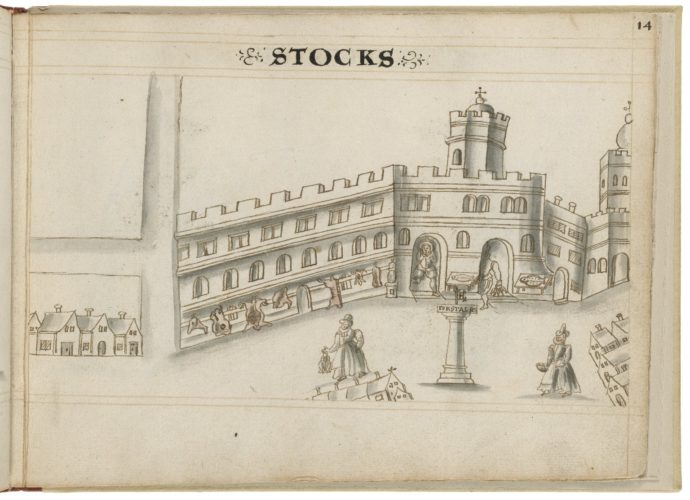Most marketplaces were nowhere near as grand as the Royal Exchange. At a minimum, they consisted of a triangular or quadrangular space between roads, marked by a market cross (shown here roughly in the centre). Such spaces had medieval roots: Stocks Market in London dated back to 1283. It sold meat and fish, as illustrated here. Its name refers to the punishment of being put in the stocks, highlighting an important subsidiary function of the Renaissance marketplace: many punishments for minor crimes, such as being whipped at the cart’s tail, took place here. The public nature of the marketplace was vital to the functioning of the punishment as humiliation: both punishment and crime would become public knowledge.
© 2019 University of Cambridge and Fitzwilliam Museum











